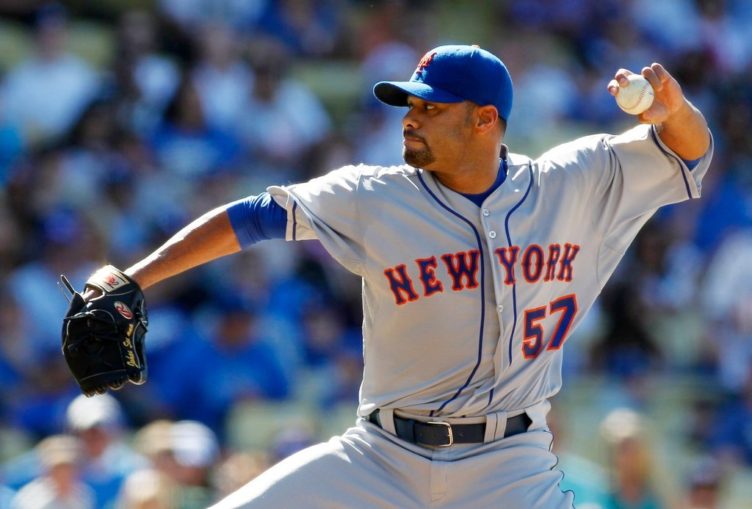
His contributions to the Mets were measured in quality — not quantity. Injuries deprived us of knowing if Johan Santana could have reached the expectations placed on him when he arrived in New York.
He was a two-time Cy Young award winner with the Minnesota Twins and perhaps the best starting pitcher in baseball. The Mets were intent on avenging a late-season collapse in 2007 and a major off-season acquisition would go a long way. For GM Omar Minaya, Santana was the solution.
Sending away top center field prospect Carlos Gomez plus three minor leaguers (Philip Humber, Deolis Guerra, and Kevin Mulvey), Minaya and the Twins agreed to a trade that resonated both in Queens and throughout the major league landscape on this day in 2008. Two days later, under a deadline to close a contract, the Mets and the left-handed ace sealed a six-year, $137.5 million dollar deal.
A team clouded with question marks in the wake of colossal disappointment was suddenly a World Series contender again. New York’s new ace fit the description in his first year — leading the national league in ERA, games started, and innings pitched while eclipsing 200 strikeouts for the fifth straight time and ending with a team-best 7.2 bWAR. He would wind up third in the NL Cy Young Award voting.
The Mets, though, couldn’t shake another rough September, which ultimately had them on the outside of the playoff picture. Santana did his best to prevent it with a performance in a must-win situation which may be his best ever as a Met.
On the penultimate of the regular season, Santana fought through a bum left knee to pitch a complete-game three-hitter against the Florida Marlins before a packed house at a soon-to-be-closed Shea Stadium.
Going forward, dominant performances were less frequent and an injured Santana was far too common. Starting with the 2009 season, he never reached 30 starts or 200 innings again. Santana proved to be perpetually fragile with the Mets after being extremely durable during his time in Minnesota. Despite the constant ailments, he produced a three-year ERA+ of 143 from ’08 through 2010.
Unfortunately, Santana missed the entirety of 2011 and 2013. Throughout his tenure, appearances on the mound were fewer than any Met fan would like. When he was pitching, he was still pretty good — if not great. Santana’s Mets career amounted to a 46-34 record over four years with a 3.18 ERA and 1.201 WHIP in 109 starts.
No Met fan will ever forget the complete game, three-hit shutout. But then there was June 1, 2012 — to this day, 60 years in, the only no-hitter by a New York Mets pitcher.
For that game alone, in spite of the injuries that held him back, the trade remains a signature moment.















